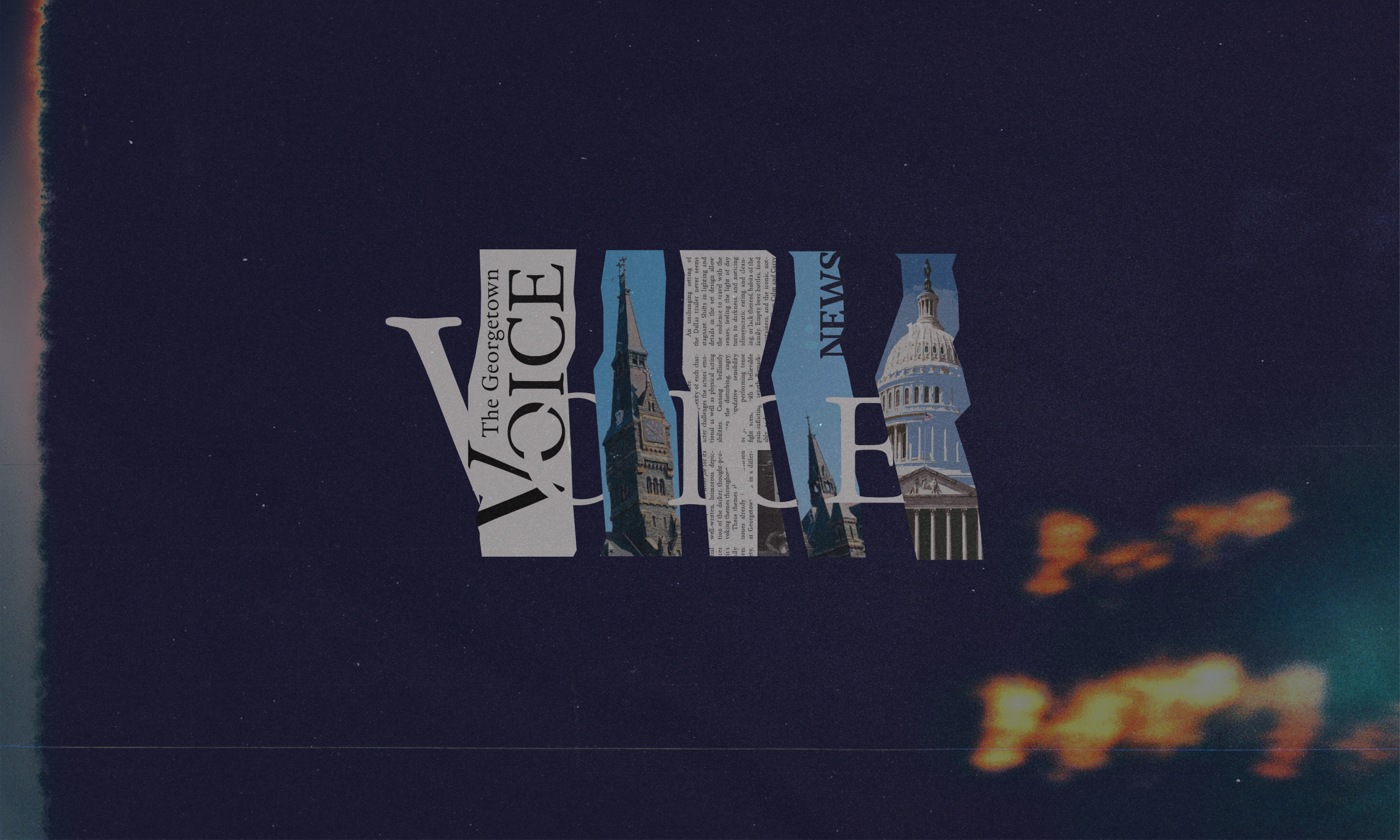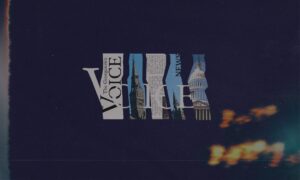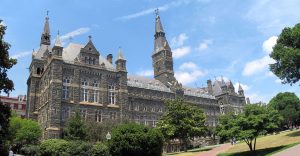Newly released results of Georgetown’s 2020 Cultural Climate Survey showed large racial disparities in reported student experience with GUPD, belonging on campus, and student safety, with students of color reporting feeling less safe, valued, and included on campus.
The survey was intended to gather data on how undergraduate and graduate students experience the culture at Georgetown, including their sense of belonging, incidents of bias and prejudice, classroom environments, and university responsiveness. Analyzed data found that white students reported higher levels of community belongingness than their Black counterparts, Black students are more likely to be stopped by GUPD than any other racial group on campus, and students of color feel less secure on Georgetown’s campus. President John DeGioia announced the survey’s results in an email on April 16. The survey was conducted from Feb. 24 to April 24 last year to gather feedback from the student body on questions pertaining to race, ethnicity, and inclusion at Georgetown.
Responses related to belongingness differed broadly by race: 76 percent of white undergraduates reported feeling like a part of the Georgetown community, while only 68 percent of Asian undergraduates, 64 percent of multiracial undergraduates, 62 percent of Hispanic and Latinx undergraduates, and 43 percent of Black and African American undergraduates said the same. Similar trends were observed across multiple questions about campus and classroom culture, both among undergraduates and graduate students.
The survey was led by Rosemary Kilkenny (LAW ’87), Georgetown’s vice president for diversity, equity, inclusion and chief diversity officer. Survey data was analyzed by the Office of Assessment and Decision Support (OADS) led by Drew Allen, the associate vice president for institutional data analytics. The project acts as a baseline to monitor university progress on key aspects of campus life, and included input from student leaders like former GUSA President Norman Francis Jr. (COL ’20).
Another major finding from the survey was the racial disparity of GUPD stops reported by students. Sixteen percent of Black and nine percent of Latinx undergraduate students reported being stopped by GUPD officers, while only six percent of white students reported the same. In response to the findings, Kilkenny and Allen met with Vice President of Public Affairs Erik Smulson and GUPD Police Chief Jay Gruber to discuss reforms to officer training, as well as more specific measures to track police stops, Kilkenny explained in a press backgrounder for student media.
Another notable observation from the survey is reported student safety on campus: six percent of undergraduates reported that they often or always felt unsafe at Georgetown. Within that disaggregate, the findings varied significantly by race: Black or African American students reported the highest percentages of unsafety at 19 percent, and Hispanic or Latinx students reported the second highest at nine percent.
The clear discrepancies in answers by race were addressed in an email by Provost Robert Groves. “Given Georgetown’s attempt to honestly face its own legacy of the enslavement of people of African descent in the 19th century and its vestiges, the survey results teach us how much more remains to be done among its current community in the 21st century,” Groves wrote to students and staff on April 16.
The survey had an undergraduate response rate of 37 percent, or 2,465 undergraduates in total, as well as one-third of graduate students, about 2,064 students.
Georgetown launched the campus cultural climate survey working group in response to negative experiences reported by BIPOC students. “The survey was created for lots of reasons – anecdotal reports from students of color who have had experiences that made them feel marginalized, not welcome and of the cuff racialized comments from faculty,” Kilkenny said in the press backgrounder. “Students of color asked the university to conduct a survey to see if these anecdotal reports are indicative of a systemic issue on campus.”
The survey was conducted amidst the Black Survivors Coalition sit-in, during which students protested a lack of university resources for Black survivors of sexual assault or harassment.
The university highlighted several steps it has taken or is planning on taking to address some of the racial discrepancies in the survey’s findings. These include diversifying university faculty through the Provost’s Distinguished Faculty Fellows, increasing Master’s student funding for disadvantaged students by 17.5 million dollars over five years, doubling Healy Fellowships for Ph.D. students, creating a mentorship program for students from marginalized backgrounds, and beginning a grant process for academic departments to adopt more inclusive curriculums.
The survey also asked students about how often professors responded to offensive statements made in the classroom, how often faculty stereotyped an identity group, and the frequency with which they made those offensive statements. While nearly 50 percent of students reported that their professors addressed inappropriate statements or did not make similarly inappropriate statements, nearly 20 percent of students said that they only sometimes, rarely, or never addressed offensive comments; sometimes, often, or always stereotyped identity groups, and sometimes, often, or always made offensive statements themselves. The findings come amidst several incidents of faculty members making problematic statements, including racist remarks from a Georgetown law professor who was later terminated.
According to Allen, the university is hoping to expand on the survey’s results and intensify research on other student body demographics, including future reports targeting issues impacting disabled students, international students, and instructor-student interactions.
“We value this work of creating equity across students’ experiences and of improving the diversity of our faculty because we firmly believe we will be a stronger, better university as a result of these efforts,” Groves wrote.





